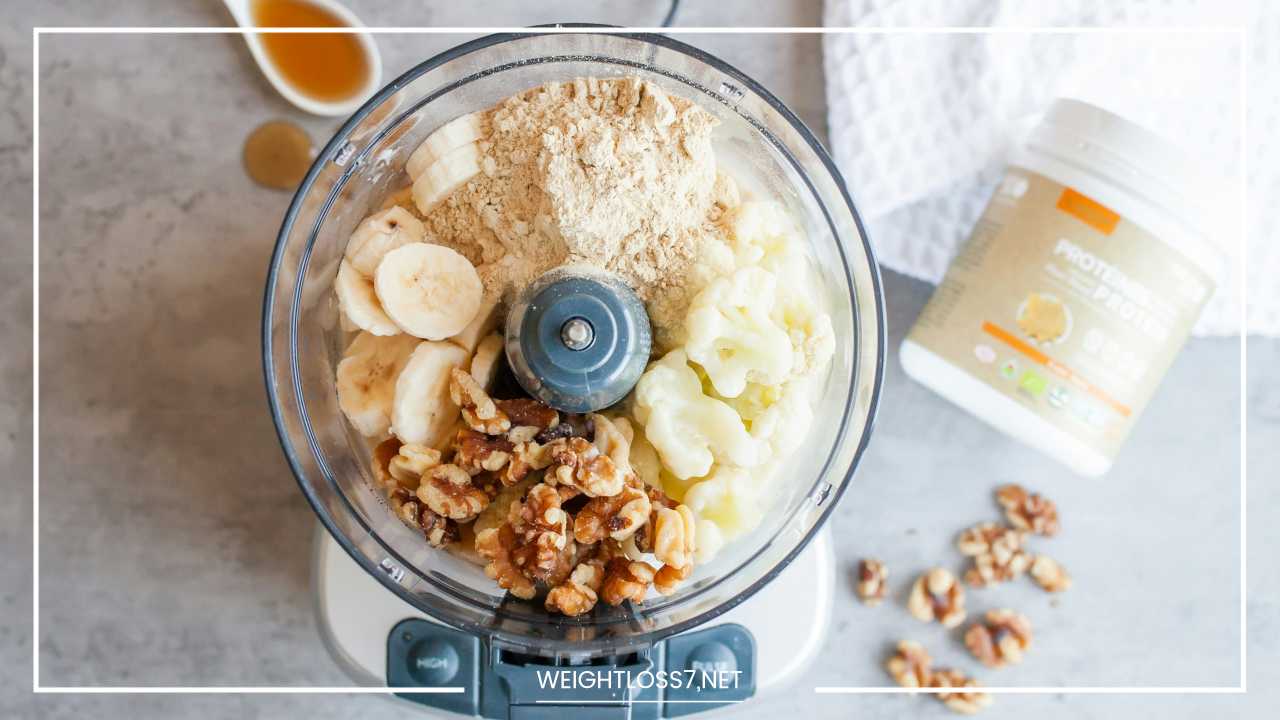Vitamins and Vitamin-Like Substances

Micronutrients
Vitamins and Vitamin-Like Substances: Keeping Your Body Running Smoothly
Our bodies are intricate biological machines, and just like any high-performance engine, they require the right fuel and lubricants to function optimally.
Vitamins and vitamin-like substances are essential micronutrients that act as the microscopic crew within this internal engine, playing a crucial role in maintaining our health and well-being. But what exactly are they, and how do they differ from each other?
This comprehensive blog post delves into the fascinating world of these micronutrients, exploring their functions, dietary sources, and the importance of maintaining a balanced intake.
Vitamins: The Essential Microscopic Crew in Detail
Vitamins are organic compounds, meaning they’re carbon-based molecules naturally found in small quantities in food. Unlike macronutrients like carbohydrates, proteins, and fats, which provide our bodies with energy, vitamins don’t directly contribute calories.
However, they act as coenzymes, essential partners for enzymes that drive countless metabolic reactions within our cells.
Our bodies can’t produce them in sufficient amounts on their own, so we rely on dietary intake to meet our daily requirements. There are thirteen essential vitamins, categorized into two main groups based on their solubility:
-
Fat-soluble vitamins: These vitamins (A, D, E, and K) can be stored in the body’s fatty tissues, allowing us to build up reserves over time. This characteristic also means excessive intake can lead to toxicity if not carefully monitored. Here’s a closer look at their functions:
- Vitamin A: Essential for maintaining healthy vision, particularly night vision. It also plays a crucial role in immune function, cell growth, and reproduction.
- Vitamin D: Promotes calcium absorption for strong bones and teeth. It also plays a vital role in immune function, cell growth, and maintaining healthy muscle function.
- Vitamin E: Acts as a powerful antioxidant, protecting cells from damage caused by free radicals. It also supports a healthy immune system and promotes healthy skin.
- Vitamin K: Crucial for blood clotting and proper bone health. It also plays a role in regulating blood sugar levels.
-
Water-soluble vitamins: Unlike their fat-soluble counterparts, water-soluble vitamins (B complex and vitamin C) aren’t stored in the body to a significant extent and need to be replenished regularly through diet. Excess water-soluble vitamins are typically excreted through urine. Let’s explore the functions of some key B vitamins and vitamin C:
- B complex vitamins: This group comprises eight B vitamins, each with its own specific functions. Some of the important roles they play include energy metabolism, nervous system function, red blood cell production, and cell growth.
- Vitamin B1 (Thiamine): Crucial for energy metabolism and brain function.
- Vitamin B2 (Riboflavin): Supports energy metabolism, cell growth, and healthy vision.
- Vitamin B3 (Niacin): Plays a role in energy metabolism, healthy cholesterol levels, and brain function.
- Vitamin B6 (Pyridoxine): Supports energy metabolism, nervous system function, and red blood cell production.
- Vitamin B12 (Cobalamin): Essential for nervous system function, red blood cell production, and DNA synthesis.
- Folic Acid: Crucial for DNA synthesis and cell growth, particularly important during pregnancy for fetal development.
- Pantothenic Acid: Supports energy metabolism and hormone production.
- Biotin: Plays a role in carbohydrate, protein, and fat metabolism.
- Vitamin C: Another powerful antioxidant, supporting the immune system and collagen production. It also plays a role in iron absorption and wound healing.
- B complex vitamins: This group comprises eight B vitamins, each with its own specific functions. Some of the important roles they play include energy metabolism, nervous system function, red blood cell production, and cell growth.
Vitamin-Like Substances: Lending a Helping Hand
Vitamin-like substances are a diverse group of compounds that share some similarities with vitamins but don’t strictly meet the definition of an essential vitamin. Here’s what sets them apart:
- Synthesis: Unlike essential vitamins, our bodies can often synthesize vitamin-like substances in small amounts on their own. This internal production can vary depending on factors like age, overall health, and dietary intake.
- Dietary Need: While some vitamin-like substances benefit from dietary intake for optimal function, they aren’t always considered absolutely essential nutrients. However, maintaining adequate levels can contribute to overall health and well-being.
Exploring Some Key Vitamin-Like Substances:
- Choline: Crucial for cell membrane health, brain function, and fat metabolism. Choline is also a precursor to the neurotransmitter acetylcholine, which plays a vital role in memory, learning, and muscle control.
- Carnitine: Plays a role in energy production by transporting fatty acids into cells, where they can be used for fuel. Carnitine levels can be affected by factors like age, exercise, and vegetarian/vegan diets.
- Inositol: Involved in cell signaling and insulin regulation. It also plays a role in brain function and mood regulation.
- Coenzyme Q10 (CoQ10): An antioxidant that supports cellular energy production and protects cells from damage. CoQ10 levels naturally decline with age, and some research suggests it may offer benefits for heart health and cognitive function.
- Lipoic Acid: Another antioxidant that plays a role in energy metabolism and helps regenerate other antioxidants like vitamin C and vitamin E.
- Para-Aminobenzoic Acid (PABA): A precursor to folic acid, PABA may also have sun-protective properties, although more research is needed.
Unlocking the Treasure Trove: Where to Find These Essential Micronutrients
The most natural and recommended way to obtain vitamins and vitamin-like substances is through a balanced diet rich in a variety of foods. Here’s a detailed breakdown of some excellent sources to help you create a vitamin and vitamin-like substance powerhouse on your plate:
- Fruits and Vegetables: A vibrant rainbow of fruits and vegetables is a treasure trove of vitamins and minerals. Different colored fruits and vegetables offer a wider range of nutrients, so incorporating a variety is key.
- Citrus fruits (vitamin C)
- Dark leafy greens (vitamins A, C, K, folate)
- Orange and yellow vegetables (vitamin A)
- Berries (vitamin C, manganese)
- Tomatoes (vitamin C, lycopene)
- Whole Grains: Excellent source of B vitamins and fiber. Opt for whole-wheat bread, brown rice, quinoa, and other whole grains to ensure a steady supply of these essential nutrients.
- Lean Protein Sources: Meat, poultry, fish, legumes, and nuts provide a good source of B vitamins, iron, and other essential nutrients. Lean cuts of meat, skinless poultry, and a variety of fish can help you meet your protein needs while also providing valuable vitamins and minerals.
- Healthy Fats: Nuts, seeds, and fatty fish offer vitamin E and healthy fats. These healthy fats also play a crucial role in the absorption of fat-soluble vitamins (A, D, E, and K).
Maintaining a Balanced Intake: Why it Matters
Both vitamin deficiencies and excessive intake can have negative consequences on our health. Here’s a deeper exploration of why a balanced approach is crucial:
-
Vitamin Deficiencies: Lack of specific vitamins can lead to a variety of health problems, ranging from mild to severe. Some common examples include:
- Vitamin A deficiency: Can cause night blindness, dry eyes, and increased susceptibility to infections. In severe cases, it can lead to permanent vision loss.
- Vitamin D deficiency: May contribute to rickets in children and bone softening (osteomalacia) in adults. It can also lead to muscle weakness and increased risk of falls.
- Vitamin B12 deficiency: Can cause fatigue, weakness, tingling in the hands and feet, and anemia. In severe cases, it can affect the nervous system and lead to cognitive decline.
- Vitamin C deficiency: Can cause scurvy, characterized by weakness, fatigue, bleeding gums, and poor wound healing.
-
Vitamin Toxicity: While rare, excessive intake of certain fat-soluble vitamins (A, D, E, and K) can lead to toxicity. This is because they can be stored in the body’s fatty tissues. Symptoms of vitamin toxicity can vary depending on the specific vitamin and the amount consumed. It’s important to follow recommended dietary allowances (RDAs) and consult a healthcare professional before taking high-dose vitamin supplements.
Getting the Right Support: Supplements or Not?
A balanced diet should provide you with all the essential vitamins and vitamin-like substances you need. However, certain factors can make supplementation necessary:
- Dietary restrictions: Vegetarians and vegans may need to supplement vitamin B12, as it’s primarily found in animal products. Additionally, vegans may benefit from supplementing vitamin D, as its main dietary source is fortified foods and fatty fish.
- Underlying health conditions: Some medical conditions can affect nutrient absorption, necessitating supplementation under the guidance of a healthcare professional. Examples include celiac disease, inflammatory bowel disease, and certain medications.
- Increased needs: Pregnant and breastfeeding women, as well as older adults, may have higher vitamin requirements due to increased demands or decreased absorption. Consulting a healthcare professional can help determine if supplementation is necessary in these cases.
Important Considerations Before Supplementing:
Before taking any vitamin or vitamin-like substance supplements, it’s crucial to:
- Consult your doctor: Discuss your individual needs and any medications you’re currently taking. Some supplements can interact with medications, so it’s important to get the green light from your doctor before starting any new supplements.
- Choose high-quality supplements: Look for reputable brands that offer third-party tested supplements. This ensures the product meets the labeled potency and purity standards.
- Start with the recommended dosage: Don’t exceed the recommended dosage unless specifically advised by your doctor. More isn’t necessarily better when it comes to vitamins and vitamin-like substances.
- Be mindful of potential interactions: Certain supplements can interact with each other or with medications you’re taking. Discuss any potential interactions with your doctor or pharmacist.
- Focus on a balanced diet first: Aim to get most of your vitamins and vitamin-like substances from a healthy diet rich in a variety of foods. Supplements should be used to fill gaps, not replace a balanced dietary approach.
Optimizing Your Vitamin and Vitamin-Like Substance Intake: Practical Tips
Here are some practical tips to help you optimize your intake of vitamins and vitamin-like substances:
- Plan your meals: Create a weekly meal plan that incorporates a variety of colorful fruits and vegetables, whole grains, lean protein sources, and healthy fats.
- Read food labels: Pay attention to the nutrient content of packaged foods to identify good sources of vitamins and vitamin-like substances.
- Cook at home more often: This gives you greater control over the ingredients and cooking methods, allowing you to retain more nutrients in your food.
- Variety is key: Don’t get stuck in a rut with the same foods every day. Explore new recipes and ingredients to ensure you’re getting a wide range of vitamins and vitamin-like substances.
- Consider seasonal produce: Seasonal fruits and vegetables are typically at their peak freshness and nutritional value. Explore what’s in season at your local farmer’s market or grocery store.
- Store food properly: Improper storage can deplete the vitamin content of food. Learn how to store different types of food to maximize nutrient retention.
- Be mindful of food preparation methods: Certain cooking methods can destroy vitamins. Steaming, baking, and stir-frying are generally gentler methods that help preserve nutrients.
Final Word: A Symphony of Micronutrients
Vitamins and vitamin-like substances are the essential microscopic crew working tirelessly within the orchestra of our bodies. By understanding their functions, dietary sources, and the importance of a balanced intake, we can empower ourselves to make informed choices that contribute to optimal health and well-being.
Remember, a balanced diet rich in a variety of whole foods should be the foundation for obtaining your daily requirements of these vital micronutrients. Consult your doctor or a registered dietitian for personalized guidance on supplementation if needed.
With a little planning and awareness, you can ensure your body has the symphony of micronutrients it needs to perform at its best, keeping you healthy and vibrant for years to come.
Table: Key Vitamins and Vitamin-Like Substances
| Nutrient | Function | Dietary Sources |
|---|---|---|
| Vitamin A | Vision, immune function, cell growth | Sweet potato, carrots, spinach, kale, cantaloupe, eggs, oily fish |
| Vitamin D | Bone health, immune function, muscle function | Fatty fish (salmon, tuna), fortified milk, eggs, sunlight exposure |
| Vitamin E | Antioxidant, cell protection | Nuts, seeds, avocados, olive oil, leafy greens |
| Vitamin K | Blood clotting, bone health | Leafy green vegetables, broccoli, Brussels sprouts, fermented foods (natto) |
| Vitamin B1 (Thiamine) | Energy metabolism, brain function | Whole grains, legumes, nuts, seeds, lean meats |
| Vitamin B2 (Riboflavin) | Energy metabolism, cell growth, healthy vision | Leafy green vegetables, dairy products, eggs, lean meats |
| Vitamin B3 (Niacin) | Energy metabolism, healthy cholesterol levels, brain function | Lean meats, poultry, fish, whole grains |
| Vitamin B6 (Pyridoxine) | Energy metabolism, nervous system function, red blood cell production | Chicken, fish, chickpeas, potatoes, bananas |
| Vitamin B12 (Cobalamin) | Nervous system function, red blood cell production, DNA synthesis | Meat, poultry, fish, eggs, fortified dairy products (for vegans) |
| Folic Acid | DNA synthesis, cell growth | Leafy green vegetables, legumes, nuts, fortified grains |
| Pantothenic Acid | Energy metabolism, hormone production | Lean meats, poultry, fish, avocados, whole grains |
| Biotin | Carbohydrate, protein, and fat metabolism | Eggs, nuts, seeds, whole grains |
| Vitamin C | Antioxidant, immune function, collagen production | Citrus fruits, berries, bell peppers, broccoli, tomatoes |
| Choline | Cell membrane health, brain function, fat metabolism | Eggs, liver, fish, soybeans, quinoa |
| Carnitine | Energy production | Red meat, poultry, fish |
| Inositol | Cell signaling, insulin regulation, brain function | Nuts, seeds, citrus fruits, whole grains |
| Coenzyme Q10 (CoQ10) | Cellular energy production, antioxidant | Organ meats, fatty fish, nuts, seeds |
Recipe Suggestions for a Vitamin and Vitamin-Like Substance Powerhouse Diet:
- Breakfast: Greek yogurt with berries, granola, and sliced almonds (vitamin A, C, B complex, choline)
- Lunch: Grilled salmon with roasted Brussels sprouts and sweet potato (vitamin A, C, D, E, B complex)
- Snack: Carrot sticks with hummus (vitamin A, C, K, choline)
- Dinner: Lentil soup with whole-grain bread (vitamin B complex, folate, iron)
Remember: This is just a starting point. Explore a wide variety of recipes to create a delicious and nutritious meal plan that provides you with the essential vitamins and vitamin-like substances your body needs to thrive.

















